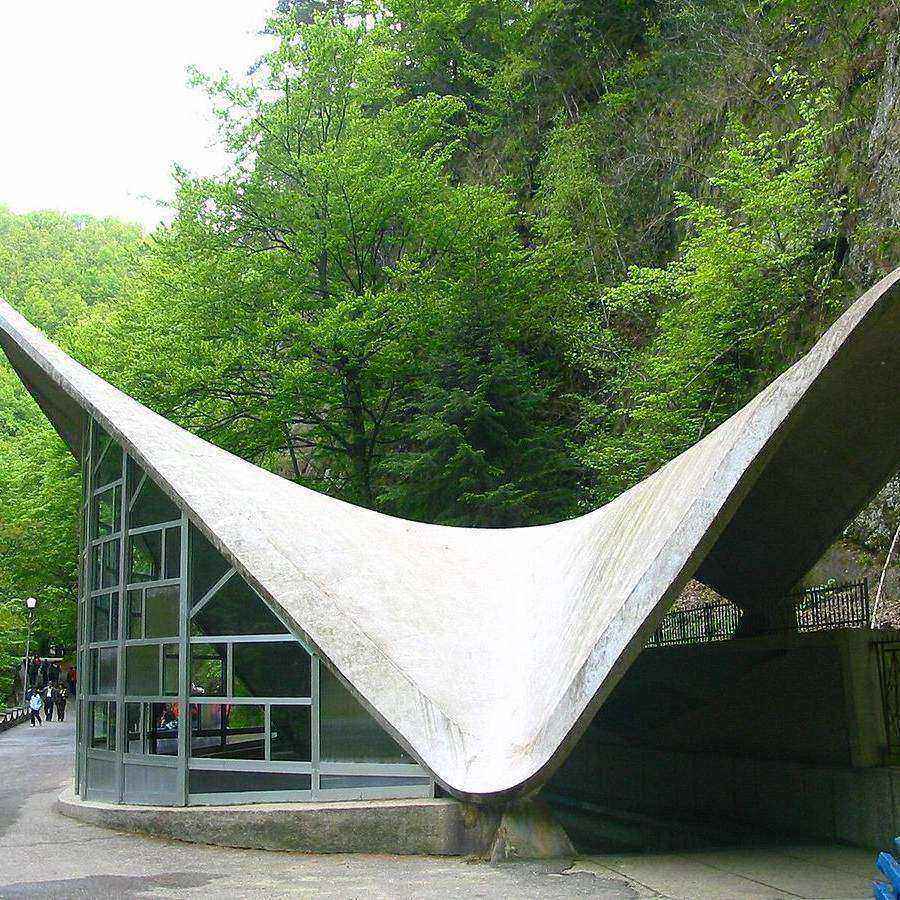Description
From: Valcea County, Oltenia, Spa Resorts
Also called “The Golden Springs”, Baile Olanesti (Olanesti Baths, TN) is the name of a town in Valcea often visited by tourists for healing purposes, due to its hypotonic or isotonic waters rich in minerals such as iodine, bromine, sodium, calcium, sulfur and chloride. The town was documented for the first time in July 19th 1527.
HISTORY OF THE BAILE OLANESTI SPA RESORT
The healing power of the Olanesti waters was first mentioned in a charter dating back to 1760; back then, the waters were called healing and were located on the estate of the Lord Steward Toma Olanescu; it is he who built the first bath chambers in this area, and the name of the resort seems to come from him as well (from the baths he built, along with his last name – Olanescu, which became Olanesti). Another theory for the name of the town comes from the cavalrymen of the Austrian army, who were named “olane” and “ulani”. The town was formed recently, and it is located in the valley of the River Olanesti, an affluent of the river Olt, between the Mountains Gerea, Folea and Caprareata of the Southern Carpathians. The town was identified at the same time that the springs were discovered, around 1760. The news of these healing waters spread with the help of Tudor Vladimirescu, who was retreating in the area accompanied by his faithful noblemen.
In 1830, the waters here were tested for the first time, and the results indicated that they were very rich in iodine; the tests were carried out by Karl Friedrich Siller, and, as a consequence thereof, the number of people coming here for treatment grew significantly. Two subsequent tests were carried out by Petrache Poenaru and Alexe Marin. In 1873, the waters here were submitted to new testing, during an exhibition organized in Europe; the resort won gold medals at the International Exhibition in Vienna, and the waters are compared to those in Baden-Baden, Karlovy-Vary and Aix de Bains. 1873 was in effect the year in which the resort acquired national and international recognition.
Unfortunately, the resort entered a period of obscurity in 1895, for about 30 years: the springs of miraculous water were blocked due to heavy rainfall. Their rediscovery occurred after World War I, and steps were taken to recapture them, while the resort was reopened with a new look: new hotels, a redesign of the springs, a pavilion of mineral baths with sulfur water. In the next period, the “May 1 Villa” was built for the soviet occupation, and much later, in 1989, Ceausescu’s villas were also built, which nowadays are used as entertainment houses.
Another heavy rainfall, this time in 1969, caused loss of human lives and also buried a series of springs; with work and investments, the resort recovered once again, and the treatment center and the “Parangul” hotel complex were born. This is where many tourists coming for treatment found accommodation offers in Olanesti. Due to the modernization and improvements in the town, on October 12th 2011, Baile Olanesti received the title of spa resort, alongside other 5 towns in Romania, by Decision no. 106 of the Romanian Government.
PLACES TO VISIT IN BAILE OLANESTI
A course of treatment with the healing waters of Olanesti is without a doubt beneficial for everyone; additionally, the resort hides several treasures around it, tourist attractions worth visiting in the area:
- The Yew (Taxus baccata) Reserve – with a surface area of 1.5 acres, is located in the Buila – Vanturarita Massif
- The Stogul Natural Reserve in the Buila Massif – Mesozoic limestone and over 35 caves and potholes can be seen here; the flora is extremely rich and made up of rare plants, such as: edelweiss, great yellow gentian, globeflower, creeping avens, snow-in-summer, dwarf juniper. The animals found here are: the brown bears, chamois, lynx, deer, boar, Western capercaillie and trout in the cold mountain waters.
- The caves in the Olanesti area: Munteanu Cave, Pestera cu Lac (Cave with a Lake, TN), Pagoda Cave, Goat Cave, Crab Cave (here you can find Ursus Spaeleus fossils)
- The Iezer Hermitage – located in the Cheia Mountain, it is the place where Saint Antonie of Iezeru Valcea lived.
- The Pahomie Herminage – one of the most isolated hermitages in Romania, about 30 km from Valcea County.
GOOD TO KNOW WHEN GOING TO BAILE OLANESTI RESORT
Access to the resort is easy both by car and by train. From Bucharest, you drive towards Ramnicu Valcea on E7, and afterwards towards Baile Olanesti on DN 64A; from any other corner of the country, the route passes through Ramnicu Valcea and continues on DN 64A.
By train, there are routes going to Ramnicu Valcea train station, on the Piatra Olt line; from here the trip can continue by minivan, and you reach your destination in a mere 30 minutes.
